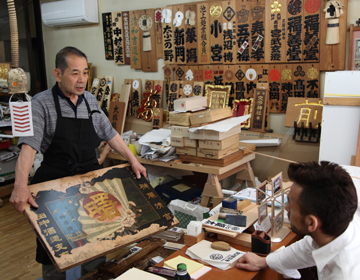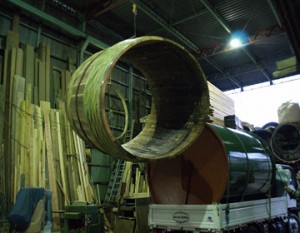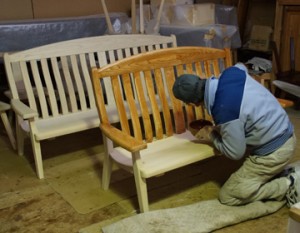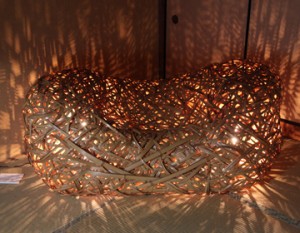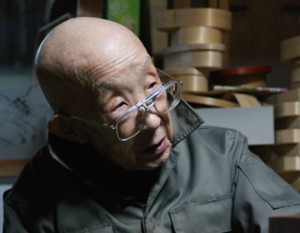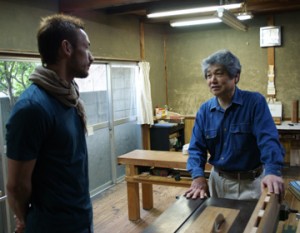The Wooden Signboard Hung by the Store Door
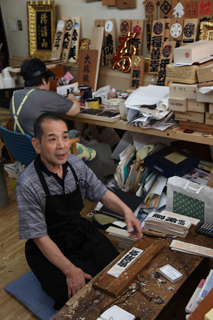
Imagine it’s the Edo period and you are standing on the main street. There is a ”sake” shop, soy sauce store, hair decorations store. When you look up, you see wooden sign boards with the store name engraved. The bigger the store, the bigger the sign, looking bold and proud.
We interviewed Yasuyuki Sakai, a signboard engraving artisan.
Different types of wood are used for the sign boards. Cypress, zelkova, katsura, and other materials upon request. According to Sakai, the most suitable for sign boards are cypress or zelkova. This is because it matches the climate of Japan. Wood from Japan is the best fit of all.
”Japanese cypress is soft, but long lasting. Horyuji Temple is made of cypress. It lasts and is strong.”
The setback of cypress is its width. ”We can’t find wide lumber these days. They are all thin. It’s so difficult to find an adequate sized tree these days. The cypress from Africa are hard and the smalls knives get worn out. Or the wood develops small cracks. So Japanese cypress is best, but it’s becoming scarce.” Sakai explained.
Signboards Carved with a Signboard Knife
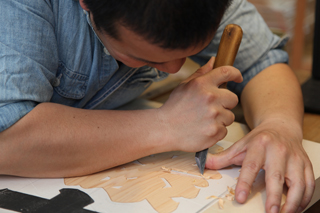
Sakai uses a small knife, especially made for carving sign boards, carving letters and other designs on signs that are small enough to fit in your hand to those that are as big as 3 meters. In recent years, chemical coating is applied to preserve the letters carved on the signs, instead of the lacquer that was used in the past by lacquer coating specialists.
”In the past, there was division of labor. There was a specialist for writing the letters, a specialist for carving, and a specialist for the lacquer coating.” With the passing of time, craftsmen decreased, and stores using wooden sign boards also decreased. Sakai had created many sign boards in the past – for Nihonbashi Mitsukoshi Main Department Store, framed sign boards for temples, and sign boards for sumo stables. He told us that the way Japanese people relate to sign boards has changed over the years.
The meaning of having a sign board
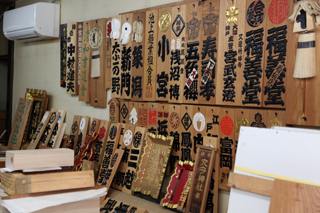
”In the past, there was tremendous meaning behind owning a sign board. There was pride. Now with large companies, they move into large buildings and change their signs. I recommend that they retain the old signs. We want them to preserve a part of their soul in the building.”
In the past, individuals went through harsh training for their jobs, and it was a status symbol to have your own sign board once you were able to become independent. ”We still have a saying in Japanese, ”Hanging a sign board” or ”Carrying the sign board on one’s shoulders” which represents the importance of sign boards.
Sakai’s words ”a part of their soul” left a strong impression. It is not the end of sign boards once they are completed. It grows with the store. For Sakai, sign boards ”live on” with the stores they represent. The words of engraver Sakai, the 3rd generation of Fukuzendo reflected the words of the people who live in unison with the sign boards.



